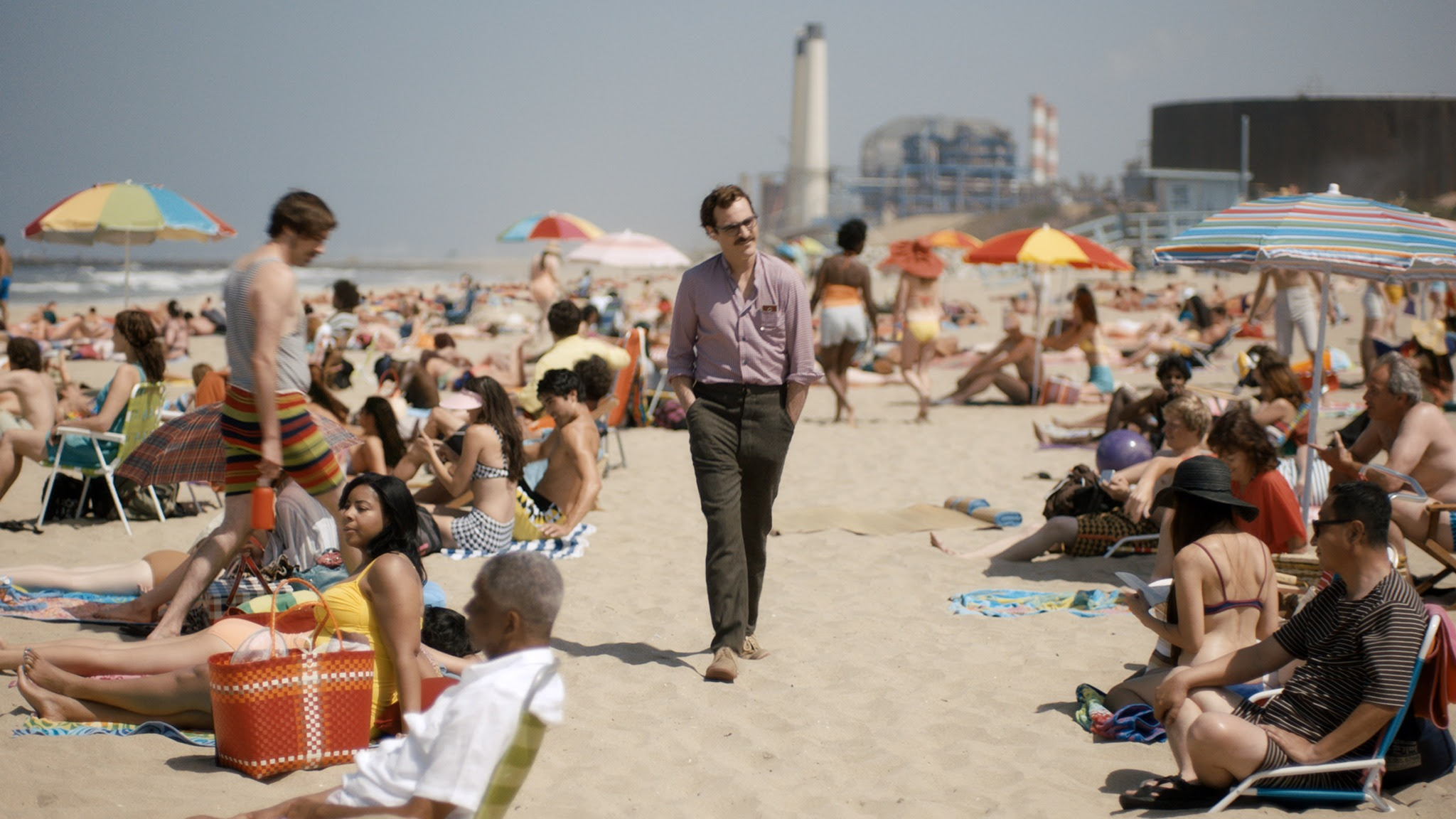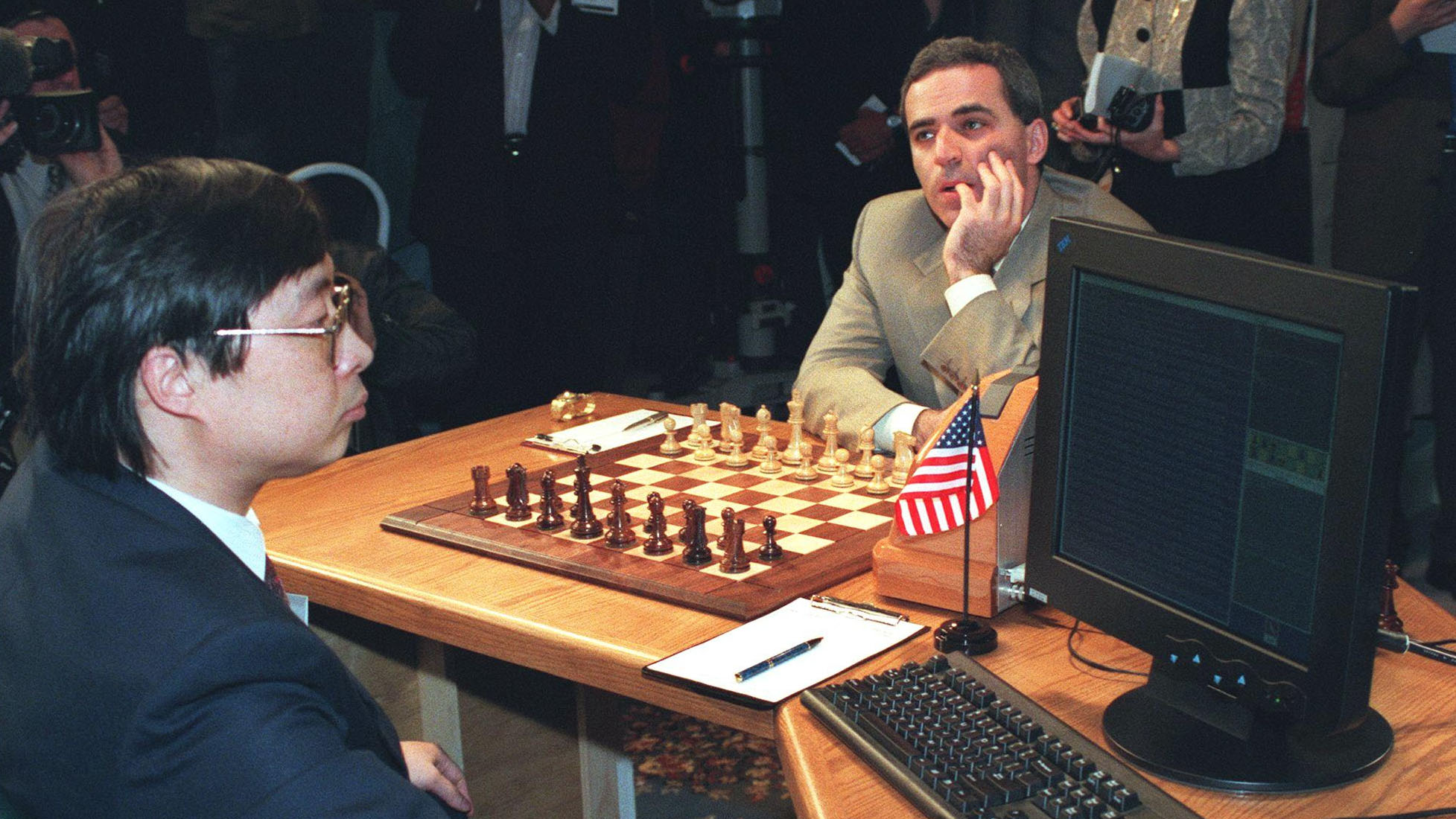
Econ Extra Credit is teaming up with “Marketplace Tech” this month to examine the artificial intelligence boom through an influential AI film: 2013’s “Her.” Subscribe here to get the whole series in your inbox.
This week, a talk with the film’s production designer K.K. Barrett.
Sci-fi lets filmmakers, cinematographers and production designers reimagine the built environment and the objects that characters interact with. Sometimes those changes make the film feel completely disconnected to our present. Think of how 2019 Los Angeles is depicted in “Blade Runner.”
But in “Her,” the future — the film never tells exactly when — is softer, more serene and more pastel. Despite the AI-centric story, director Spike Jonze and production designer K.K. Barrett made technology disappear into the background rather than stand out.
“Marketplace Tech” acting host Meghan McCarty Carino spoke with Barrett about how he created a familiar yet distinct vision of the future.
This interview has been edited.
“Her” is set in a sort of future version of Los Angeles. But it looks very different than the kind of techno-dystopian visions of the future in other movies like “Blade Runner” or “Minority Report.” How would you describe the world that you created in “Her”?
There was a goal to not let the outside world be the obstruction to the characters’ dilemmas. [For Theo,] the character’s dilemma was being more human and finding a human connection. Technology usually is an interference for that.
We wanted to make sure that the dystopian world wasn’t ours, because dystopian means that there’s sociological problems; there’s outside forces that affect your everyday life and kind of press you down. Instead, we wanted to make everything easy and perfect, so that we could focus on the character.
Rather than try to make things tech, we wanted to de-tech things. One of the tropes of those films is everything’s very techie. Every technology [is] visually obvious. We wanted to erase technology to not have it come between us and the characters.
The city looks much more human-centered than the Los Angeles that I live in.
It’s funny, [many people told me], “I want to live in that world.” And I said, “You can.” All you have to do is just clean it up and go to places that you feel good in. And that can be your world.
We visually edit things every day when we’re moving around, and we see things that we’re attracted to, and we don’t see things that don’t interest us.
One of the things [in the movie] that I wanted to get rid of right away was graphics. I didn’t want any graphics on clothes, which, you know, become visual noise. And I didn’t want any advertising. Our current technology is filled with advertising. You can barely open a screen without having five or six pop-ups that you have to ignore, and they’re all trying to get your attention because they think they know you. They think they’ve learned you from your habits.
It does feel like we’re at this inflection point with technology that’s built on a foundation of advertising.
It started with trying to get to know you. And then, of course, it was co-opted by getting to know what you purchase. And then what you purchase becomes an entry for somebody else to get your dollars out of your wallet. Advertising has become technology, and technology’s become advertising.
The heart of the movie is essentially a piece of technology, this artificial intelligence operating system that names itself Samantha. You’ve said in the past that you and Spike Jonze really didn’t want this to be a movie about technology. Why is that?
I think that when the futurists think of tech, they always think of devices rather than connections, and I think it’s completely backwards. When you’re making a movie, you get to wear any hat you want and make up your own world. And so that’s what we did. We didn’t have to rely on futurists.
One of the first things we decided is [the movie] is not about technology. If it’s about technology, we’re going to be paying attention to the technology. Let’s erase the technology and go back to the humanity.
How did you think about designing the rest of that world and the technology that might be incorporated into it, even if it is sort of invisible, as you say?
Well, in keeping with wanting technology to go away, we wanted to take away things that we’re familiar with, just to make an audience pay attention.
So, we got rid of keyboards. And [the computer was operated with] just hand gestures, which is quite possible now. It wasn’t at the time, but it’s being used more and more.
We got rid of the familiar frame of the computer and made it look like a frame from a piece of art — Samsung has a TV like that now. When [Theo] comes home, he walks through his house and lights come on. We have that now too with Nest and our home speakers and all that kind of stuff.
I’ve often said the only thing that existed in the film that we don’t have was the holographic projection of the game, and the fast growing operating system. Everything else is completely possible and was possible at the time we made the film.
Listen to McCarty Carino’s full interview with Barrett on “Marketplace Tech.”
Related links
A lasting influence Want to learn more about Barrett’s design process for the movie? Read this Wired article from 2013, which argued that “Her” would be a more influential film on the future of user interfaces than “Minority Report.”
“Dangerously lonely” New York Times opinion columnist Ezra Klein recently rewatched “Her” and then wrote about the potential impact of large language models on human relationships (gift link) when the U.S. is already suffering from a loneliness epidemic. We’ll have more on that in next week’s newsletter.
“Her” is available to stream on Criterion Channel with a subscription. You can also rent or buy it on many platforms, including Prime Video, Apple TV, Vudu and YouTube.
After you watch, send us your thoughts and questions at extracredit@marketplace.org or reply to this email!
There’s a lot happening in the world. Through it all, Marketplace is here for you.
You rely on Marketplace to break down the world’s events and tell you how it affects you in a fact-based, approachable way. We rely on your financial support to keep making that possible.
Your donation today powers the independent journalism that you rely on. For just $5/month, you can help sustain Marketplace so we can keep reporting on the things that matter to you.
















